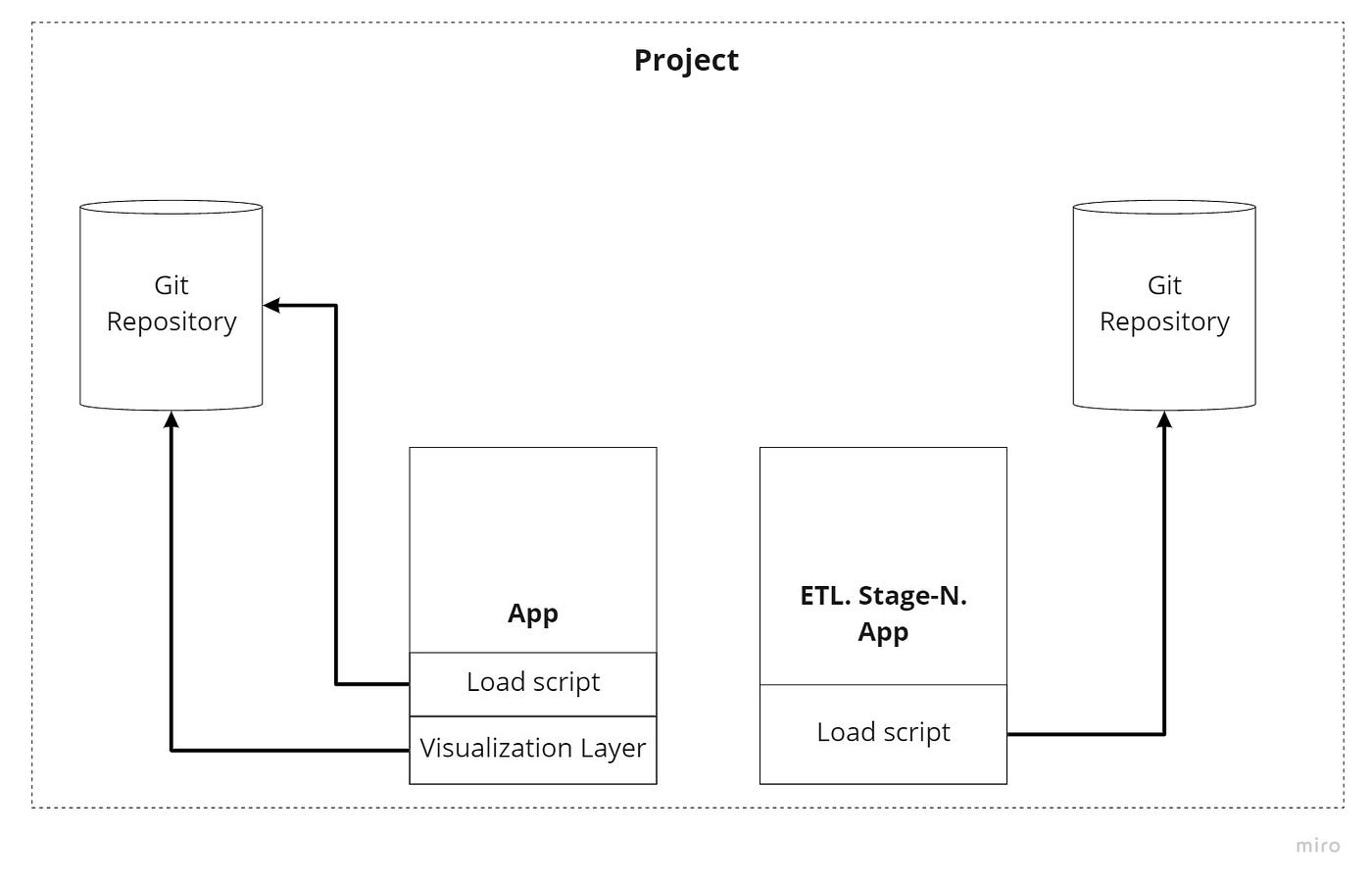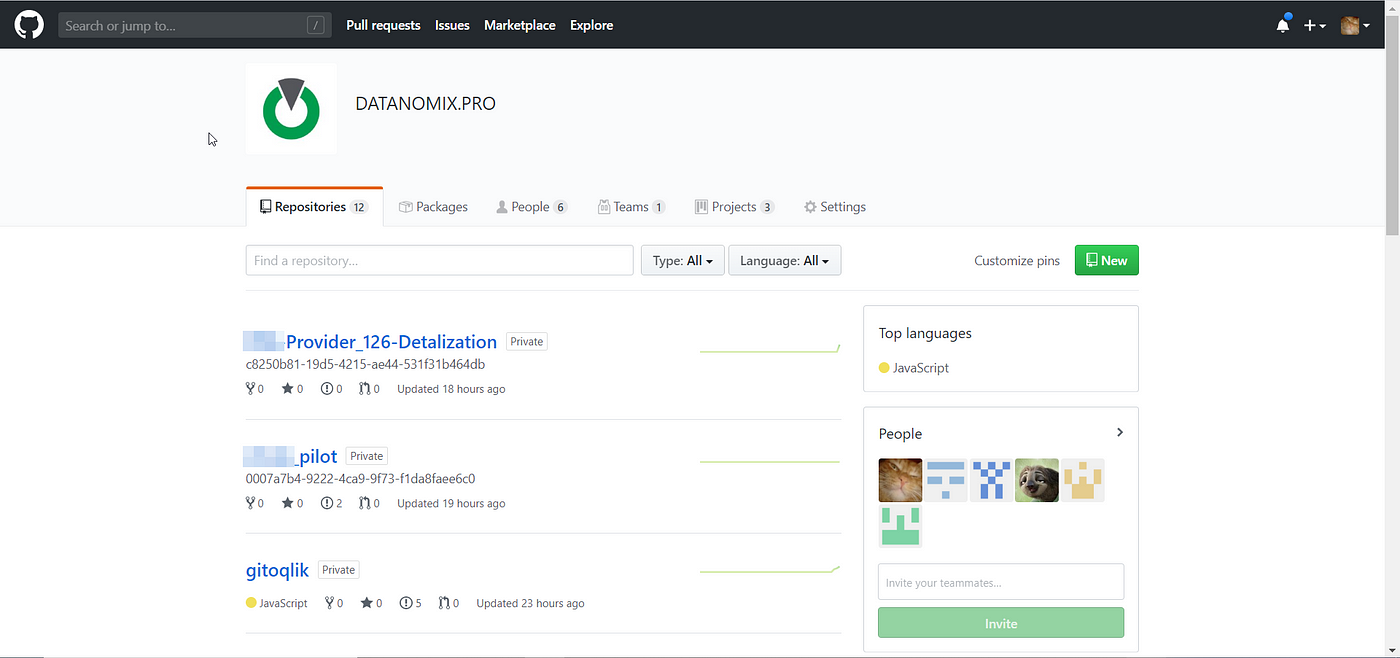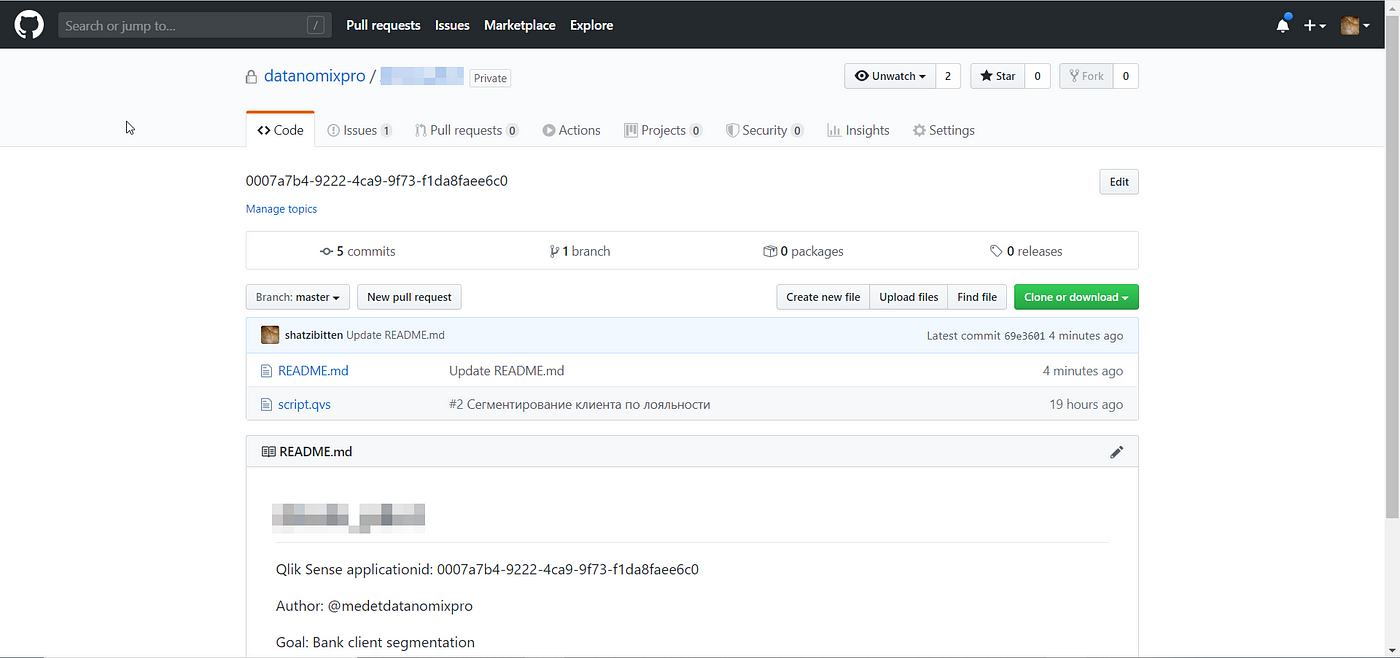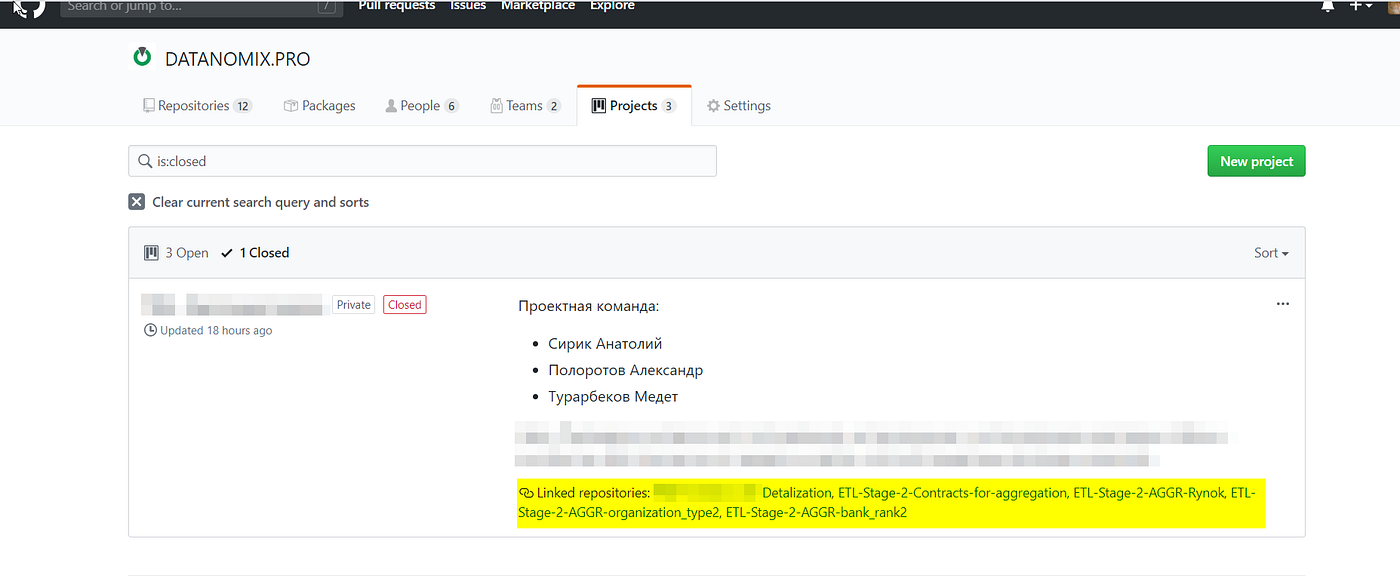During my career, I tried many tools for task management (from Google Sheets to Trello) for our Qlik-projects and always was in searching for the most comfortable way to manage team and track changes of Qlik Sense applications with a strong lineage between project-backlog and source code. And finally, I found it.
Today I will show you how we are managing projects with GitHub in our team. I hope it will be useful for you.

Github provides a pretty-well interface for team management. You can create and manage repository, groups of members (team), projects, and collect all issues from repositories in one place to your kanban boards.

As you can see above there are many repositories created in our organization. It is so curious to know what do we store in our repository. So, let’s look inside.

As you can see, there are two files here:
- README.md — details about the Qlik Sense application.
- script.qvs — load script of Qlik Sense applications.
And in typical cases each repository has two internal projects:
- Data model — the project contains issues about the ETL process and data model.
- Dashboards — the project issues about the visualization layer.


In Github, we have an easy solution to represent it — linked repositories. Just create a project and link repository for it. Voila!

But how source code gets into the repository?
You could say that it is so exhausting to create a repository and commit code into it by hand. And you are right! I don’t like it, too. And in 80% of projects, you will never need to use external IDE because the team doesn’t look so big enough and there are some uptime investments to configure the environment.
That’s why we are using our internal tool, code-named“gitoqlik.” Gitoqlik serializes qlik sense app and provides easy-to-use access to the code-repositories in Github and Gitlab — you can commit your changes and revert to any commit from the history. You can see it below:
P.S. If you want to test Gitoqlik in your team, you are welcome — https://gitoqlik.com
